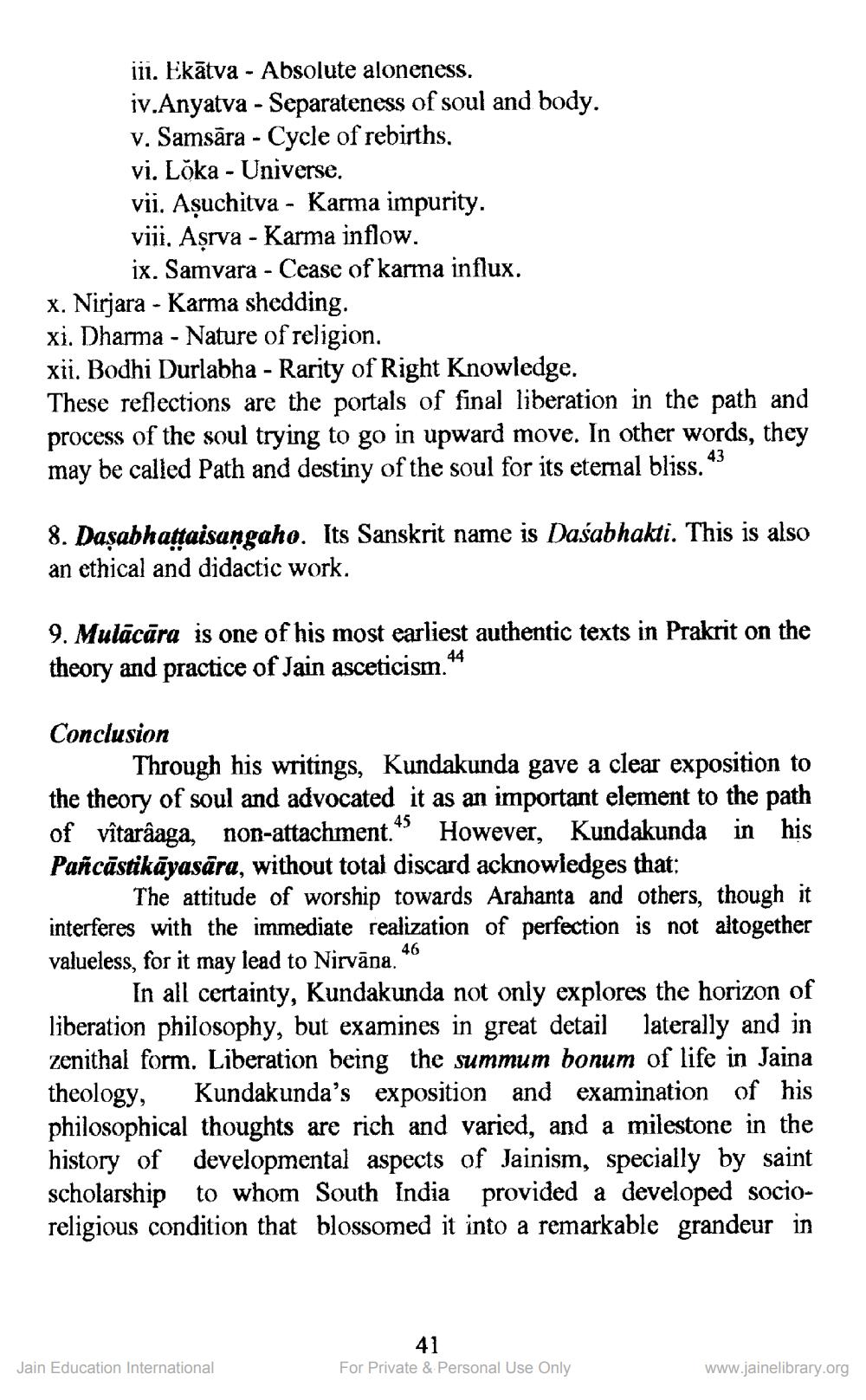________________
iii. Ekātva - Absolute aloneness. iv.Anyatva - Separateness of soul and body. v. Samsāra - Cycle of rebirths, vi. Loka - Universe. vii. Așuchitva - Karma impurity. viïi. Așrva - Karma inflow.
ix. Samvara - Cease of karma influx. x. Nirjara - Karma shedding. xi. Dharma - Nature of religion. xii. Bodhi Durlabha - Rarity of Right Knowledge. These reflections are the portals of final liberation in the path and process of the soul trying to go in upward move. In other words, they may be called Path and destiny of the soul for its eternal bliss. 43
8. Dasabhattaisangaho. Its Sanskrit name is Dasabhakti. This is also an ethical and didactic work.
9. Mulācāra is one of his most earliest authentic texts in Prakrit on the theory and practice of Jain asceticism.44
Conclusion
Through his writings, Kundakunda gave a clear exposition to the theory of soul and advocated it as an important element to the path of vîtarâaga, non-attachment. However, Kundakunda in his Pañcāstikāyasāra, without total discard acknowledges that:
The attitude of worship towards Arahanta and others, though it interferes with the immediate realization of perfection is not altogether valueless, for it may lead to Nirvana.
In all certainty, Kundakunda not only explores the horizon of liberation philosophy, but examines in great detail laterally and in zenithal form. Liberation being the summum bonum of life in Jaina theology, Kundakunda’s exposition and examination of his philosophical thoughts are rich and varied, and a milestone in the history of developmental aspects of Jainism, specially by saint scholarship to whom South India provided a developed socioreligious condition that blossomed it into a remarkable grandeur in
41
Jain Education International
For Private & Personal Use Only
www.jainelibrary.org




